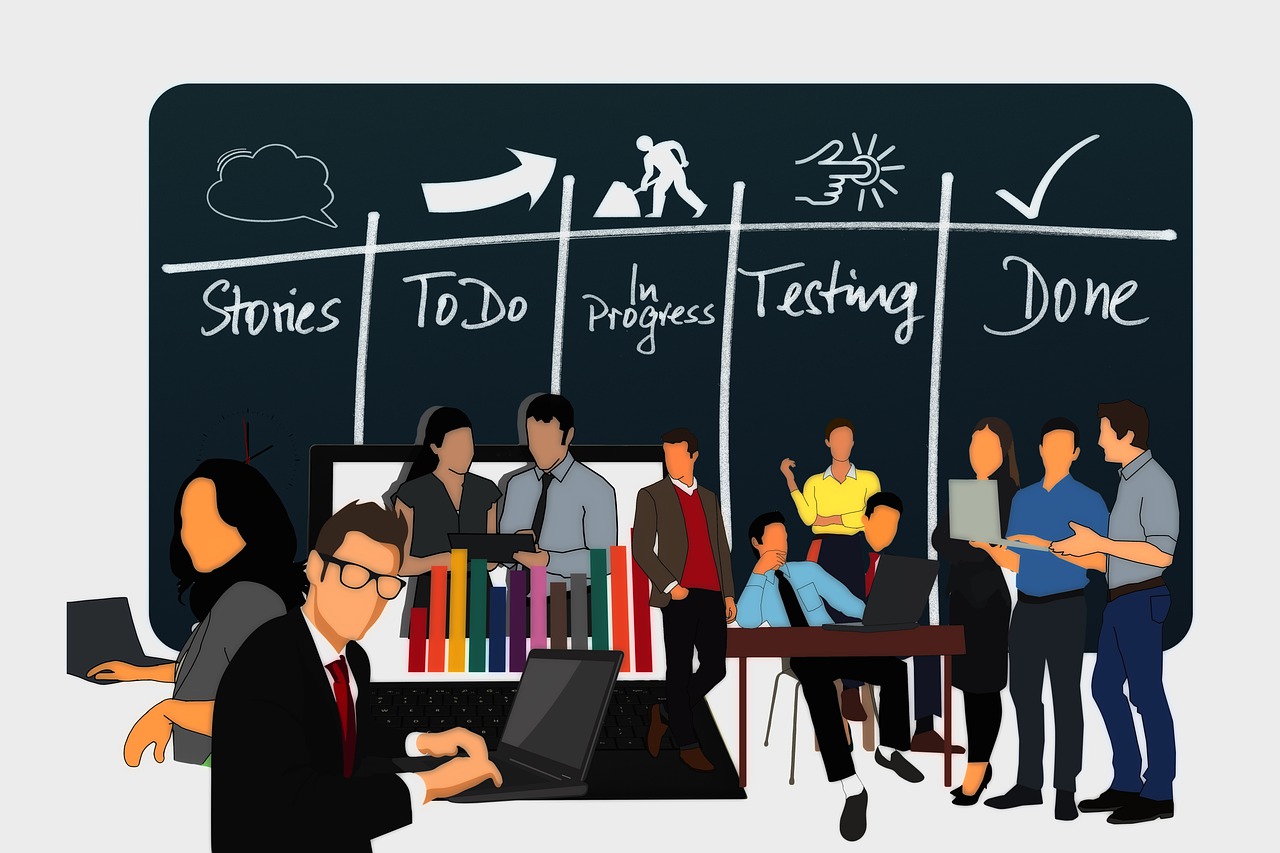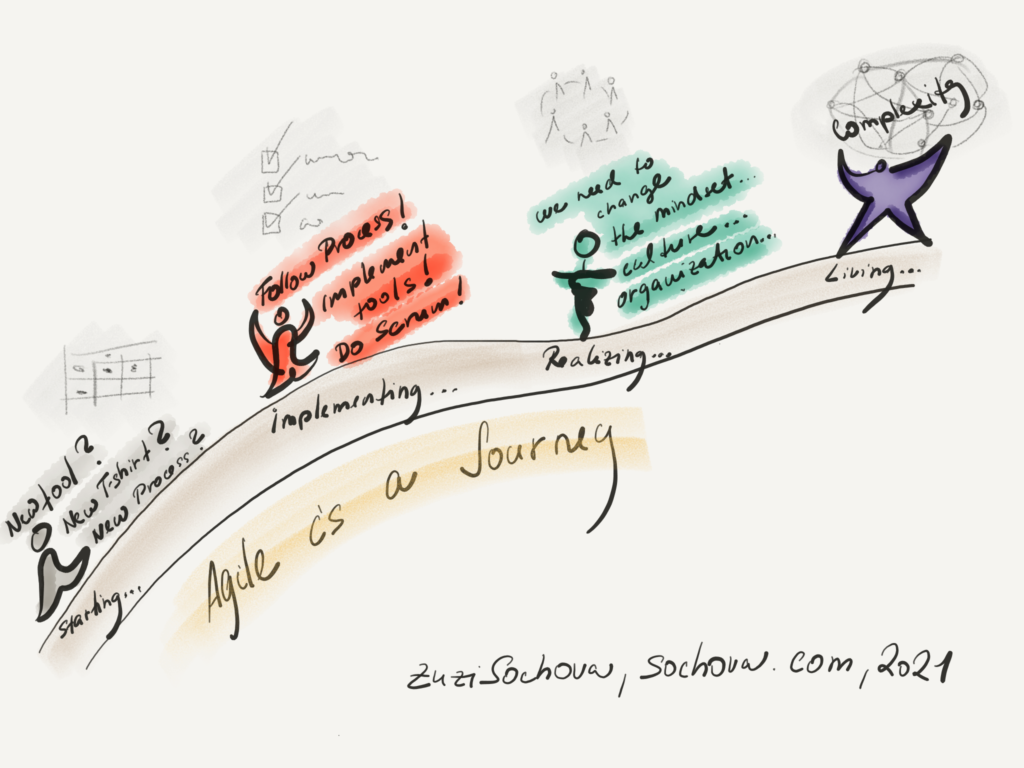
Agile Leadership And Sticky Transformation
Agile Leadership And Sticky Transformation
In today’s fast-paced business world, the importance of agile leadership cannot be stressed enough. At MCTC Ltd, our team of experts specializes in change and transformation consultancy and training, empowering organizations to thrive in the face of constant change. With our proven methodologies and extensive experience, we help senior leaders navigate the complexities of agile scale transformations and ensure that these changes stick for the long term. Our passion lies in achieving results and truly helping organizations create a better future. Through our comprehensive courses and training programs, we equip current and aspiring leaders with the best practices in leadership that support successful agile scale transformations. By exploring case studies from some of the world’s most successful organizations, we provide invaluable insights into the practices that have delivered remarkable results. Whether your organization is already deploying agile or considering it, our courses will leave you with a concrete plan to drive better results at scale and create a brighter future for your company. Trust MCTC Ltd to be your partner in successful Agile Leadership! Speak to MCTC today about our consultancy advice and training packages.

Agile Leadership
Introduction to Agile Leadership
Agile leadership is a crucial aspect of successful organizational transformations. In today’s fast-paced and uncertain business landscape, traditional leadership approaches often fall short in addressing the need for flexibility, adaptability, and innovation. Agile leadership, on the other hand, embraces these qualities and focuses on empowering teams, fostering a culture of continuous learning and improvement, and providing a clear vision and goals.
The Importance of Agile Leadership
The role of leadership in driving successful transformations cannot be overstated. Senior leaders play a crucial part in setting the tone for change and creating an environment where agile practices can thrive. Without strong and effective leadership, organizations may struggle to navigate the complexities and challenges of agile transformations. Agile leadership is not just about adopting agile methodologies but also about leading with an adaptive mindset, empowering teams, and providing a clear direction for achieving the organization’s goals.
The Secret to Successful Transformations
Understanding Agile Transformations
Before delving into the role of agile leadership in transformations, it is important to understand what an agile transformation entails. Agile transformations involve a fundamental shift in the way organizations operate and think. It goes beyond implementing agile methodologies in isolated teams and requires a holistic approach that encompasses culture, processes, and mindset. Agile transformations focus on creating a collaborative and responsive environment that encourages experimentation, embraces change, and promotes continuous improvement.
Challenges of Agile Transformations
Agile transformations are not without challenges. They require significant shifts in organizational culture, communication, and ways of working. Resistance to change, lack of alignment, and managing cultural shifts are some of the common challenges that organizations face during their transformation journeys. Overcoming these challenges requires strong leadership and a commitment to continuously learn and adapt.
The Role of Agile Leadership in Transformations
Agile leadership plays a critical role in driving successful transformations. Agile leaders serve as change agents, inspiring and guiding their teams through the transformation process. They create a culture of trust, collaboration, and continuous learning. Agile leaders also act as coaches, providing support and guidance to their teams, enabling them to embrace change, and empowering them to make decisions and take ownership of their work. Their ability to communicate and align the organization around a clear vision and goals is vital for sustained success in agile transformations.

Key Principles of Agile Leadership
Adaptive Mindset
An adaptive mindset is the foundation of agile leadership. Agile leaders embrace change, uncertainty, and complexity. They are open to new ideas, constantly seeking feedback, and willing to experiment and learn from failure. This mindset allows them to navigate through the ambiguity of transformations and make informed decisions based on the changing needs of the organization.
Empowering Teams
Agile leaders understand the importance of empowering their teams. They create an environment where individuals feel safe to voice their opinions, take ownership of their work, and make decisions. By empowering teams, agile leaders foster creativity, innovation, and collaboration, enabling teams to adapt and respond to changing requirements and deliver high-quality products or services.
Continuous Learning and Improvement
Agile leaders are lifelong learners. They actively seek opportunities to expand their knowledge and skills, staying updated on industry trends and best practices. They encourage their teams to do the same and foster a culture of continuous learning and improvement. By promoting a growth mindset, agile leaders enable their teams to adapt and thrive in a rapidly changing environment.
Clear Vision and Goals
Agile leaders provide a clear vision and goals for their teams and the organization as a whole. They communicate the purpose and direction, ensuring that every team member understands how their work contributes to the overall objectives. This clarity allows teams to stay focused and aligned, making informed decisions and prioritizing their efforts effectively.
Developing Agile Leadership Skills
Identifying and Developing Agile Leaders
Identifying and developing agile leaders is essential for the success of agile transformations. Organizations need to identify individuals with the potential to embrace agile leadership qualities and provide them with the necessary training and opportunities to develop their skills. Assessing individuals’ adaptability, communication, collaboration, and coaching abilities can help in identifying potential agile leaders.
Creating Leadership Development Programs
Creating leadership development programs tailored to the needs of agile leaders is crucial. These programs should focus on building leadership capabilities, enhancing communication and coaching skills, and deepening understanding of agile methodologies and principles. Leadership development programs can include workshops, mentoring, coaching, and experiential learning opportunities.
Training and Coaching Agile Leaders
Training and coaching are essential elements in developing agile leadership skills. Providing training on agile methodologies and frameworks, such as Scrum or Kanban, enables leaders to understand the principles and practices that underpin agile transformations. Coaching, on the other hand, helps leaders apply their knowledge in real-world situations, guiding them in overcoming challenges and developing their leadership abilities.
Case Studies of Successful Agile Transformations
Company A: From Traditional to Agile
Company A, a large manufacturing organization, embarked on an agile transformation journey to address increasing market competition and customer expectations. The senior leadership recognized the need for agility and worked closely with agile coaches to implement agile methodologies across the organization. By empowering teams, fostering cross-functional collaboration, and adopting iterative and incremental development practices, the organization achieved significant improvements in product quality, delivery speed, and customer satisfaction.
Company B: Agile Transformation at Scale
Company B, a global technology company, underwent an agile transformation at scale to improve its delivery capabilities and respond more effectively to market demands. The leadership team embraced agile principles and practices and invested in training and coaching for leaders at all levels. By aligning around a common vision, adopting agile project management frameworks, and promoting a culture of experimentation, the organization experienced increased productivity, faster time-to-market, and enhanced employee engagement.
Company C: Agile Leadership in a Global Setting
Company C, a multinational financial services organization, faced the challenge of implementing agile practices across its geographically dispersed teams. The leadership team recognized the importance of agile leadership in driving the transformation and focused on providing leadership development programs tailored to the needs of remote teams. By emphasizing communication, collaboration, and trust-building, the organization successfully implemented agile methodologies, resulting in improved team performance, faster decision-making, and increased customer satisfaction.
Overcoming Challenges in Agile Transformations
Change Resistance within the Organization
Change resistance is often a significant obstacle in agile transformations. Agile leaders play a crucial role in addressing this resistance by focusing on communication, transparency, and empathy. They involve stakeholders in the transformation process, explaining the benefits of agility, and addressing concerns or misconceptions. Agile leaders also provide continuous support, coaching, and reassurance to individuals and teams during the transition, helping them overcome resistance and embrace change.
Lack of Alignment and Communication
Lack of alignment and communication can hinder the progress of agile transformations. Agile leaders prioritize communication and ensure that information flows freely across teams and departments. They facilitate regular alignment meetings, encourage open dialogue, and create platforms for knowledge sharing and collaboration. By fostering a culture of transparency and ensuring everyone is aligned towards the organization’s goals, agile leaders minimize misunderstandings and enable effective decision-making.
Managing Cultural Shifts
Culture plays a significant role in the success of agile transformations. Agile leaders recognize the importance of aligning the organizational culture with agile values and principles. They actively work towards breaking down silos, encouraging collaboration, and promoting a mindset of continuous learning and improvement. Agile leaders also celebrate successes and recognize individuals and teams for their efforts, fostering a positive and supportive culture that embraces agility.

This image is property of scaledagile.com.
Measuring and Assessing Agile Leadership
Metrics for Agile Leadership Success
Measuring the success of agile leadership requires the use of appropriate metrics. These metrics should align with the goals of agile transformations and focus on key indicators of success, such as team performance, customer satisfaction, time-to-market, and employee engagement. By monitoring and analyzing these metrics, organizations can gain insights into the effectiveness of their agile leadership practices and identify areas for improvement.
Assessing Leadership Competencies
Assessing leadership competencies is crucial in developing and improving agile leadership skills. Organizations can use competency frameworks that highlight key behaviors and abilities required for agile leadership. These frameworks can be used to assess leaders’ strengths and development areas, enabling targeted training and coaching interventions. Regular feedback and self-reflection can also help leaders become more self-aware and identify opportunities for growth.
Feedback and Continuous Improvement
Feedback plays a vital role in agile leadership development. Agile leaders actively seek feedback from their teams, peers, and stakeholders to understand their impact on others and identify areas for improvement. Regular retrospectives and feedback sessions provide opportunities for leaders to reflect on their behaviors, adjust their approach, and continuously improve their leadership skills. By embracing a culture of feedback, organizations foster continuous learning and growth.
Agile Leadership and Organizational Culture
Impact of Leadership on Culture
Leadership has a profound impact on organizational culture. Agile leaders shape and influence the culture by modeling agile behaviors and values. Their actions, decisions, and communication style set the tone for the organization and influence how individuals and teams perceive and respond to change. Agile leaders foster a culture of trust, collaboration, and continuous learning, encouraging teams to embrace agility and take ownership of their work.
Creating a Culture of Agility
Creating a culture of agility requires leadership commitment and consistency. Agile leaders promote agile values and principles, aligning the organization’s policies, processes, and practices with the agile mindset. They encourage experimentation, celebrate innovation, and value individuals’ contributions. By creating an environment that supports agility and fosters collaboration and empowerment, agile leaders lay the foundation for sustained success in agile transformations.
Aligning Leadership and Culture
Aligning leadership and culture is crucial in driving agile transformations. Agile leaders need to understand and adapt their leadership style to align with the desired culture. They involve employees in decision-making, encourage diverse perspectives, and ensure that individuals at all levels feel valued and empowered. Agile leaders also invest in developing their own cultural intelligence, enabling them to navigate cultural shifts and foster an inclusive and agile culture.

This image is property of agile-scrum.com.
Sustaining Agile Transformations
Building Resilience and Adaptability
Sustaining agile transformations requires building resilience and adaptability at all levels of the organization. Agile leaders promote a growth mindset and help individuals and teams develop the capabilities to embrace change and navigate uncertainty. They support individuals in building their resilience through training, coaching, and providing opportunities for skill development. By fostering a mindset of continuous improvement and adaptability, organizations can sustain the benefits of agile transformations in the long run.
Embedding Agile Practices and Values
Embedding agile practices and values in the organization’s DNA is vital for sustaining agile transformations. Agile leaders ensure that agile practices are integrated into the daily work routines and processes. They encourage teams to reflect on their practices, experiment with new ideas, and continuously improve. By reinforcing agile values and practices, leaders create an environment where agility becomes the norm and teams can work efficiently, collaborate effectively, and deliver value consistently.
Continuing Leadership Development
Agile leadership development is an ongoing process. Agile leaders need to continually learn, update their skills, and adapt to the evolving needs of the organization. Organizations should provide continuous leadership development opportunities, such as workshops, conferences, and coaching, to support leaders in their growth journey. By investing in leadership development, organizations ensure that their leaders have the necessary skills and mindset to drive sustained success in agile transformations.
Conclusion
Agile leadership is the secret behind successful transformations that stick. It plays a crucial role in driving organizational agility, enabling teams to embrace change, and delivering value to customers. Agile leaders empower their teams, foster a culture of continuous learning and improvement, and provide a clear vision and goals. By developing agile leadership skills, organizations can navigate the challenges of transformations, sustain the benefits of agility, and create a better future for themselves and their stakeholders.
